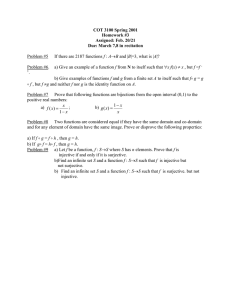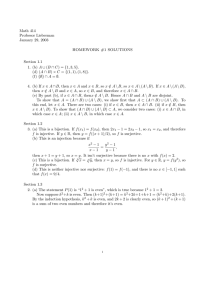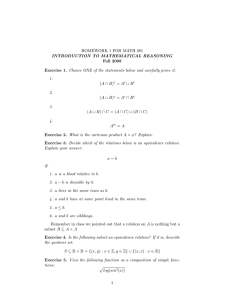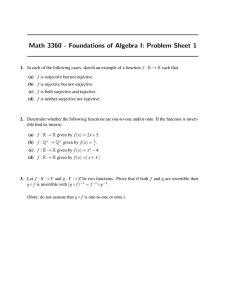Extra Practice Problems 2
advertisement
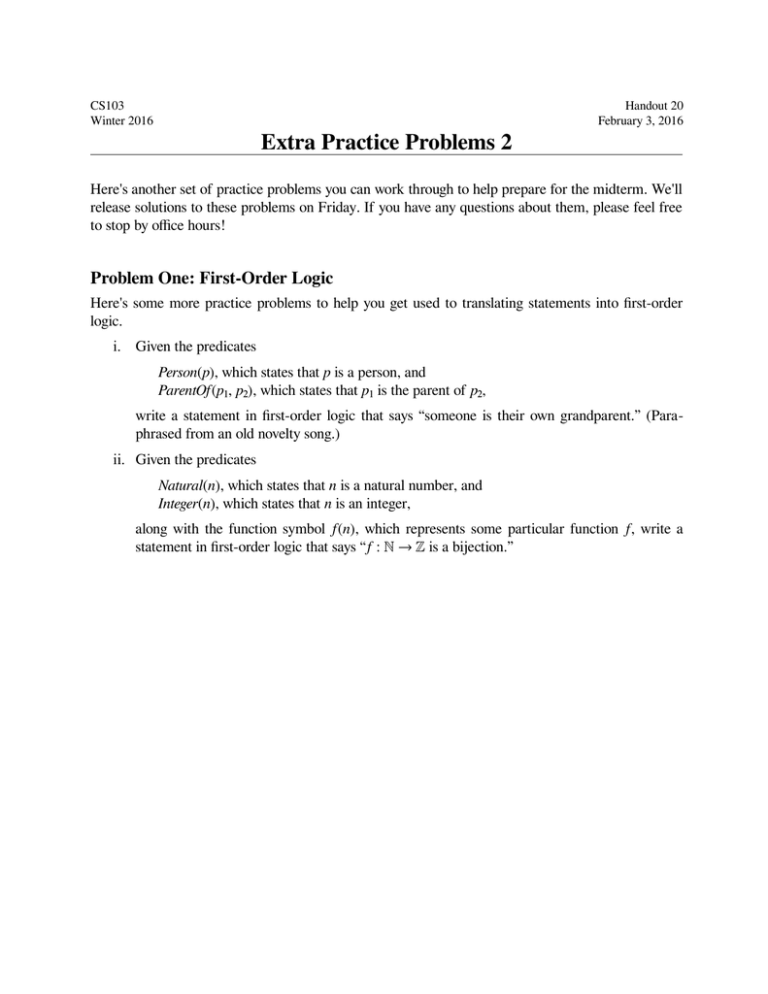
CS103 Winter 2016 Handout 20 February 3, 2016 Extra Practice Problems 2 Here's another set of practice problems you can work through to help prepare for the midterm. We'll release solutions to these problems on Friday. If you have any questions about them, please feel free to stop by office hours! Problem One: First-Order Logic Here's some more practice problems to help you get used to translating statements into first-order logic. i. Given the predicates Person(p), which states that p is a person, and ParentOf(p₁, p₂), which states that p₁ is the parent of p₂, write a statement in first-order logic that says “someone is their own grandparent.” (Paraphrased from an old novelty song.) ii. Given the predicates Natural(n), which states that n is a natural number, and Integer(n), which states that n is an integer, along with the function symbol f(n), which represents some particular function f, write a statement in first-order logic that says “f : ℕ → ℤ is a bijection.” 2/2 Problem Two: Functions It's possible to find all sorts of weird functions from infinite sets into themselves. This question asks you to come up with functions with all sorts of properties from ℕ back to itself. i. Find a function f : ℕ → ℕ that is both injective and surjective. You should briefly justify why your function has these properties, but no formal proof is necessary. ii. Find a function f : ℕ → ℕ that is injective but not surjective. You should briefly justify why your function has these properties, but no formal proof is necessary. iii. Find a function f : ℕ → ℕ that is surjective but not injective. You should briefly justify why your function has these properties, but no formal proof is necessary. iv. Find a function f : ℕ → ℕ that is neither injective nor surjective. You should briefly justify why your function has these properties, but no formal proof is necessary. Problem Three: Binary Relations Let R be a binary relation over a set A. The square of R, denoted R2, is a binary relation over A defined as follows: xR2y if there is some z ∈ A such that xRz and zRy. It turns out that if R is an equivalence relation, then R and R2 end up being exactly the same relation. Prove that if R is an equivalence relation over a set A and a, b ∈ A, then aRb if and only if aR2b. Problem Four: General Discrete Math A Latin square is an n × n grid such that every natural number between 1 and n, inclusive, appears exactly once on each row and column. A symmetric Latin square is a Latin square that is symmetric across the main diagonal from the upper-left corner to the lower-right corner. Specifically, the elements at positions (i, j) and (j, i) are always the same. Prove that in any n × n symmetric Latin square, where n is even, there is some number between 1 and n that appears nowhere on the diagonal.

